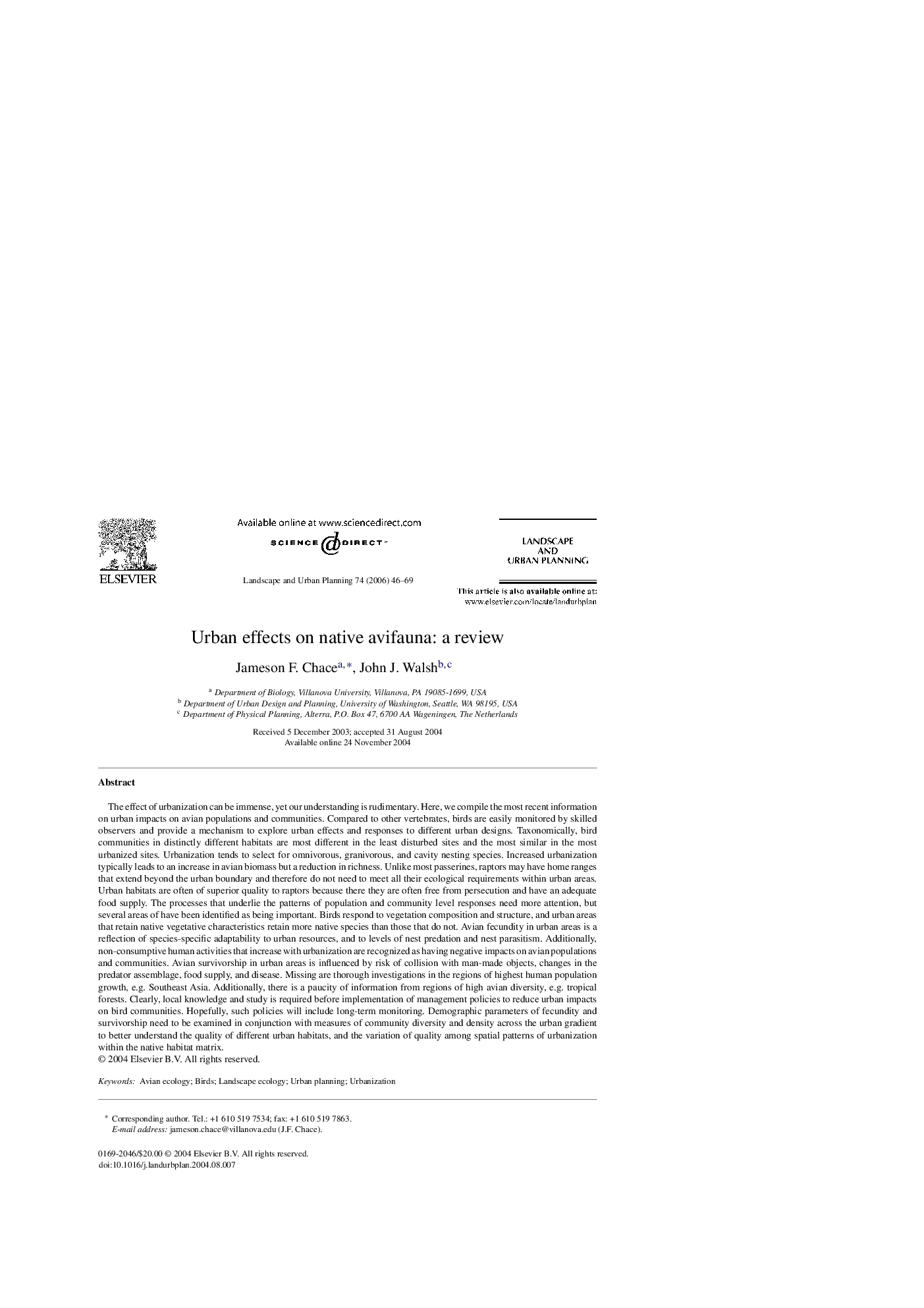| کد مقاله | کد نشریه | سال انتشار | مقاله انگلیسی | نسخه تمام متن |
|---|---|---|---|---|
| 1050710 | 945722 | 2006 | 24 صفحه PDF | دانلود رایگان |

The effect of urbanization can be immense, yet our understanding is rudimentary. Here, we compile the most recent information on urban impacts on avian populations and communities. Compared to other vertebrates, birds are easily monitored by skilled observers and provide a mechanism to explore urban effects and responses to different urban designs. Taxonomically, bird communities in distinctly different habitats are most different in the least disturbed sites and the most similar in the most urbanized sites. Urbanization tends to select for omnivorous, granivorous, and cavity nesting species. Increased urbanization typically leads to an increase in avian biomass but a reduction in richness. Unlike most passerines, raptors may have home ranges that extend beyond the urban boundary and therefore do not need to meet all their ecological requirements within urban areas. Urban habitats are often of superior quality to raptors because there they are often free from persecution and have an adequate food supply. The processes that underlie the patterns of population and community level responses need more attention, but several areas of have been identified as being important. Birds respond to vegetation composition and structure, and urban areas that retain native vegetative characteristics retain more native species than those that do not. Avian fecundity in urban areas is a reflection of species-specific adaptability to urban resources, and to levels of nest predation and nest parasitism. Additionally, non-consumptive human activities that increase with urbanization are recognized as having negative impacts on avian populations and communities. Avian survivorship in urban areas is influenced by risk of collision with man-made objects, changes in the predator assemblage, food supply, and disease. Missing are thorough investigations in the regions of highest human population growth, e.g. Southeast Asia. Additionally, there is a paucity of information from regions of high avian diversity, e.g. tropical forests. Clearly, local knowledge and study is required before implementation of management policies to reduce urban impacts on bird communities. Hopefully, such policies will include long-term monitoring. Demographic parameters of fecundity and survivorship need to be examined in conjunction with measures of community diversity and density across the urban gradient to better understand the quality of different urban habitats, and the variation of quality among spatial patterns of urbanization within the native habitat matrix.
Journal: Landscape and Urban Planning - Volume 74, Issue 1, 1 January 2006, Pages 46–69